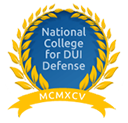

OVI Glossary
What is the difference between a “DUI” and an “OVI”? How could I be arrested for being in “physical control” of a vehicle I wasn’t driving? What is this “IID” and why would I need to install it in my vehicle?
Many people arrested for operating a vehicle under the influence of alcohol or drugs (OVI) in Ohio (commonly referred to as driving under the influence or DUI in other parts of the country) are facing criminal charges for the very first time.
The attorneys at Joslyn Law Firm created this OVI Glossary as a quick reference guide showing the terms and phrases frequently used in OVI cases.
DUI Lawyer in Cincinnati, Ohio
If you were arrested for alleged drunk driving in Cincinnati, Ohio, or the surrounding areas of central Ohio, you should seek out the services of an experienced criminal defense attorney. The attorneys at Joslyn Law Firm fight to get the most favorable outcome to OVI cases for clients in Cincinnati and surrounding areas in Hamilton County, Butler County, Franklin County, Clinton County, Clermont County, and Greene County.
Cincinnati OVI attorney Brian Joslyn has been certified both as an instructor in the administration of standardized field sobriety tests by The National Highway Traffic Safety Administration and in the operation, diagnostic, verification, and calibration of the BAC Datamaster Breath Alcohol Testing Instruments manufactured by National Patent Analytical Systems, Inc.
You can have him review your case as soon as you call (513) 399-6289 or submit an online form to arrange a free, confidential consultation.
OVI Abbreviations used in Hamilton County, OH
Here are some of the most common abbreviations used in an OVI case in Ohio:
- ALS — Administrative License Suspension
- BAC — Blood Alcohol Content
- BMV — Ohio Bureau of Motor Vehicles
- CDL — Commercial Driver’s License
- CFR — Code of Federal Regulations
- CMV — Commercial Motor Vehicle
- DIP —Driver Intervention Program
- DUI — Driving Under the Influence of Alcohol or Drugs
- FST — Field Sobriety Test
- HGN — Horizontal Gaze Nystagmus
- IID — Ignition Interlock Device
- NHTSA — National Highway Traffic Safety Administration
- ORC — Ohio Revised Code
- OVI — Operating a Vehicle Under the Influence of Alcohol or Drugs
- OVUAC — Operating a Vehicle After Underage Consumption
- PBT — Portable Breath Test
- SCRAM — Secure Continuous Remote Alcohol Monitoring
- SFST — Standardized Field Sobriety Test
Definitions of OVI Terms Used in Ohio
Absorption Rate — The rate at which alcohol is absorbed in the human body. Body weight, body type, gender, rate of consumption, food, and medications are just some of the factors that can affect absorption rate. Thus, everybody’s absorption rate is different.
Aggravating Factors — Facts or circumstances that essentially make criminal acts worse and typically increase the cause for more stringent punishment. In an OVI case, aggravating factors might include previous DUI convictions, the presence of minors in the vehicle during an alleged offense, or extremely high BAC levels.
Breathalyzer — While Breathalyzer is the brand name for the instrument that tests a person’s BAC, it has essentially become the term most people use to describe any device that measures alcohol levels. A PBT is often thought to be a form of a breathalyzer, but Ohio Administrative Code § 3701-53-02 specifically limits the instruments that are approved as evidential breath testing instruments to the BAC DataMaster, BAC DataMaster K, BAC DataMaster cdm, Intoxilyzer model 5000 series 66, 68 and 68 EN, Intoxilyzer model 8000 (OH-5), and Intoxilyzer model 8000 (OH-2). These are all units that are typically machines located inside police stations.
Burn-Off Rate — The rate at which alcohol in the body is metabolized or eliminated from the body. Many of the same factors that impact absorption rate also affect the burn-off rate, and people who drink regularly typically burn off alcohol much more quickly than casual drinkers.
Chemical Test — Any test that is used to determine the alcohol or drug content of an alleged offender is considered chemical testing. Breath tests are the most common for alleged drunk driving cases, but blood or urine tests may be used when alleged offenders are suspected of being under the influence of controlled substances.
Dram Shop — The legal term for any bar, tavern, or other drinking establishment where alcoholic beverages are sold or served. The name is derived from Colonial Era establishments that served alcohol by the dram, a small liquid measure. Today, the term is largely used in conjunction with dram shop laws that establish liability for businesses that serve alcohol to intoxicated people who end up injuring others. Under Ohio Revised Code § 4399.18, a liquor permit holder can be liable for knowingly selling an intoxicating beverage to a noticeably intoxicated person or a minor.
Horizontal Gaze Nystagmus — Nystagmus is a vision condition in which the eyes make repetitive, uncontrolled movements, from side to side, up and down, or in a circular pattern. Also known as HGN, this test is one of the three standardized field sobriety tests deemed reliable by the National Highway Traffic Safety Administration (NHTSA). After first evaluating an alleged offender’s eyes for resting nystagmus, a police officer will hold an object about one foot from a subject’s nose and move it from side to side. Signs of jerking in the eyes are usually treated as probable cause to arrest an alleged offender.
Ignition Interlock Device — Also known as an IID, this is essentially a breath test installed in a vehicle that requires a driver to submit a breath sample before the vehicle can be started. The IID is programmed such that the vehicle will not start if the subject’s BAC is higher than the preset limit. IID installation is frequently required for most second and subsequent OVI convictions, and alleged offenders are responsible for the significant costs of installing and regularly calibrating the devices.
Implied Consent — Like every other state in the country, Ohio motorists are deemed to have provided this consent to field sobriety tests and chemical tests to determine impairment when they apply for a driver's license. Police officers are required read the refusal to submit to chemical testing warnings under Ohio Revised Code § 4511.192 to alleged offenders. Refusal to submit to testing is a crime itself that triggers separate penalties in addition to the DUI arrest.
Mitigating Factors — Unlike aggravating factors, any facts, information, or evidence that lessens an alleged offender’s culpability are considered mitigating factors that usually reduce charges or lessen sentences. In an OVI case, mitigating factors could include lack of a prior criminal record, a willingness to seek treatment for an addiction problem, or a difficult personal history.
Nolo Contendere — Latin for "I do not wish to contend," nolo contendere is frequently referred to simply as “no conest.” A nolo contendere plea has the same legal effect as a guilty plea in that an alleged offender is convicted and accepts the punishment, but the refusal to admit guilt may prove beneficial in related civil cases.
One-Leg Stand — Another one of the three NHTSA standardized field sobriety tests, the one-leg stand test involves subjects being asked to raise one foot roughly six inches off the ground with their hands at their sides and count aloud in thousands while looking at the raised foot until ordered to stop. Swaying, using arms for balance, or putting the foot down are treated signs that can be used as probable cause to arrest an alleged offender.
Per Se — Latin for "itself," a so-called per se OVI in Ohio means that alleged offenders have broken the law simply by having a BAC of 0.08 or higher—regardless of whether or not they exhibit any other physical signs of intoxication.
Physical Control — Under Ohio Revised Code § 4511.194, physical control is defined as “being in the driver's position of the front seat of a vehicle or in the driver's position of a streetcar or trackless trolley and having possession of the vehicle's, streetcar's, or trackless trolley's ignition key or other ignition device.” People are prohibited in Ohio form being in physical control of any vehicle while under the influence of drugs or alcohol.
Plea Bargain — After negotiations between a prosecutor and a defense attorney, the plea bargain (or plea agreement) is the way a criminal case is settled in order to avoid having to go to trial. An alleged offender usually agrees to plead guilty in exchange for a reduced charge or sentence.
Provisional License — Also called a restricted license, this allows motorists who have had their licenses suspended for DUI to be able to drive for very specific purposes, such as to and from work, school, or treatment.
Romberg Balance Test — Named after German neurologist Moritz Heinrich Romberg, this test involves subjects standing with their feet together, tilting their heads slightly back, closing their eyes, and estimating when 30 seconds have passed. This test is a non-standardized field sobriety test that has not been approved by NHTSA, but is still used by some police agencies. Other common non-standardized tests used by some police officers include the vertical gaze nystagmus, the finger-to-nose test, the finger count test, the alphabet test, and the backward numbers test. Any use of these tests usually means that the field sobriety tests cannot be used against the alleged offender in court.
Sobriety Checkpoint — A roadblock set up by local police to stop random drivers for breath and/or sobriety tests is known as a sobriety checkpoint. NHTSA established the following standards in order to ensure that checkpoints are lawfully conducted:
- Vehicles to be stopped in a predetermined order, such as every other vehicle or every third vehicle;
- The site should be selected by policy-making officials, based upon areas having a high incidence of drunk driving;
- There must be limits on when the checkpoint is to be conducted and for how long;
- Warning lights and signs need to be clearly visible;
- Advance publicity is required.
SR-22 — An SR-22 bond (or SR-22 insurance) is automobile insurance for drivers who are considered “high risk.” Motorists may be required to obtain an SR-22 filing in order to regain their driver’s licenses following OVI convictions.
Underlying Charge — In cases of chemical test refusal, this is the criminal charge that resulted in the test being requested.
Walk-and-Turn — The last of the three NHTSA standardized field sobriety tests, this test is administered by having the subject take nine steps in a row, heel-to-toe, along a real or imaginary straight line. After taking the nine steps, the subject turns on one foot and returns to the starting point by taking nine more heel-to-toe steps. Stopping while walking, not walking heel-to-toe, stepping off of the line, or taking the wrong number of steps can all be considered signs of impairment be used as probable cause to arrest an alleged offender.
Zero Tolerance — The BAC limits for minors are much lower than they are for adults, and zero tolerance laws are intended to punish underage motorists for driving after having consumed any amount of alcohol. In Ohio, the BAC limit for minors is actually 0.02, which essentially means that most underage people of average weight could feasibly be in violation of the limit after a single drink.























